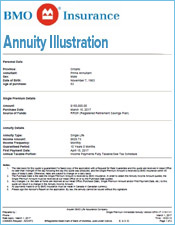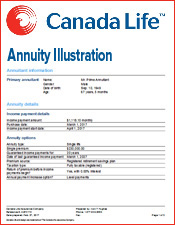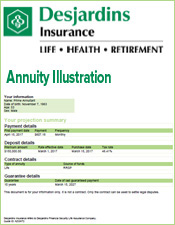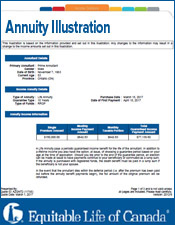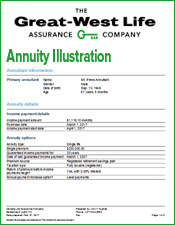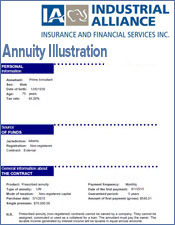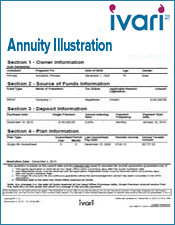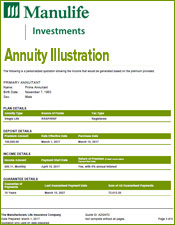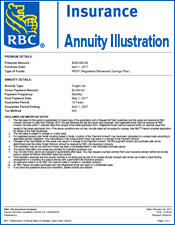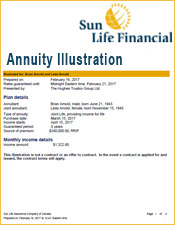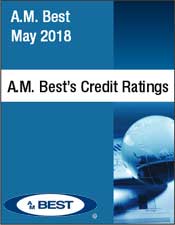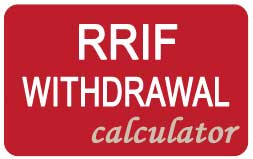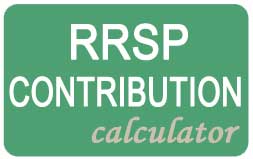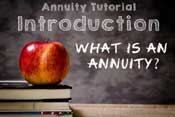What Is An ETF?

What is an ETF?
An exchange-traded fund (ETF) is an envelope holding a group of stocks or bonds. Instead of picking and choosing individual assets, an investor buys into the particular collection held within the envelope. Each share represents partial ownership of the assembled portfolio.
According to a February 2021 report by the Canadian ETF Association, total assets under management reached 269.4 billion this year, up 28.1% from the previous year. Canada has about 875 listed ETFs available from 39 providers, but this number is constantly rising as does complexity.
The popularity of ETFs continues to increase for a variety of reasons. Let’s look at how they work, what they offer, and why many investors find them attractive.
ETF Compared to Mutual Fund
An ETF resembles a mutual fund as an investor can buy more than one bond or stock with one purchase. This portfolio diversification is always desirable, because it spreads risk across many investments. However, an ETF also differs greatly from a mutual fund in many ways.
ETFs trade like stocks and can be bought and sold throughout the trading day. The price fluctuates as the market ebbs and flows. Alternatively, mutual funds are only priced once a day.
Mutual funds tend to have a manager or a management team that decides which stocks or bonds go in and out of the fund in hopes of creating good returns. These funds are considered “actively managed”.
An ETF is usually “passively managed” and normally tracks a particular market, sector, or stock market index through a computer algorithm. Examples of these funds include ETFs that track the S&P/TSX 60 which monitors the performance of 60 large companies on the Toronto Stock Exchange.
Other examples include ETFs that track the bond market or particular sectors such as energy, healthcare, or real estate. Passive ETFS are expected to return as close to the returns of their respective index as possible.
However, since the first ETF appeared on the TSX in 1990 the ETF market has changed significantly. Currently, about 2 percent of ETFs are actively managed. The mindset behind actively managed ETFs is the investor enjoys lower fees than mutual funds, but can rely on management expertise. Investment companies suggest this can lead to better risk-adjusted returns and quicker responses to rapidly changing markets.
Since an ETF usually involves an algorithm rather than an actual manager, it tends to come with a lower management expense ratio (MER) than a mutual fund. The MER for a fund is calculated as a percentage of the value and used to cover operating expenses. The average range of an ETF MER is between 0.05% and 0.25%.
Fees for an actively managed fund depend on the fund manager, but an investor can expect to pay a higher fee than for a passively managed one. While investment firms are quick to point out that the difference between actively and passively managed funds involve fractional percentages, higher MERs can substantially erode returns over time.
The range of ETFs has also grown exponentially. Investors now have a multitude of ETFS that serve many purposes. Some are relatively straightforward, while others are only fully-understood by investment professionals. The following are the most common ETFs, but investors can certainly expect more to appear on the market.
ETF Types
Even though investors can choose from a huge range of ETFs, not all will suit their portfolio, risk tolerance level, or investment goals. As a result, companies that offer ETFs tend to focus on particular needs to make investing decisions simpler. The following are the largest ETF categories.
Index ETFs
These ETFs track a stock market index. They offer investors an easy and economical way to invest in multiple publicly-traded companies. Investors can choose an ETF that tracks large, medium, or small companies through a number of indices. For instance, the S&P/TSX Composite Index tracks the stocks of about 230 major companies in Canada which represent about 70% of the total market capitalization on the Toronto Stock Exchange.
However, investors aren’t limited to Canadian indices. Some ETFs track U.S. or international indices. Examples include the S&P 500, NASDAQ-100, Russell 2000, and the MSCI EAFE Investable Market Index, to name just a few.
Fixed Income ETFs
Fixed-income ETFs focus on bonds and treasuries. They tend to be actively managed, but the assets within them don’t usually turnover often making them generally stable. As a result, they can offer steady, predictable returns to offset higher risk investments in an investor’s portfolio.
For instance, the S&P Canada Aggregate Bond Index tracks government and corporate bonds. However, investors can also gain exposure to U.S. and global bonds, some hedged back to the Canadian dollar and others not. Hedging can help protect an investor from the downside of currency fluctuations, but it also prevents them from enjoying the benefits of increases.
Bond ETFs usually pay quarterly dividends, but some offer monthly returns. Dividends held for longer periods can have a slightly negative effect as investor money isn’t available for reinvestment.
Some bond ETFs are open-end. The structure is much the same as a mutual fund in that new shares are constantly available for sale and sold by the investment company. This structure allows an investor in reinvest their dividends immediately.
ETFs Focused on Sectors
The global economy is divided into 11 main sectors through the Global Industry Classification Standard (GICS) as well as several funds set up for a specific situation or problem. If an investor wishes they can buy an ETF within one of these sectors hoping it will outperform the overall market.
However, leading stocks within a specific sector can rise and fall so the mix within the ETF counts too. A good example is the energy sector which has taken a beating due to COVID-19, whereas renewable energy ETFs have shown increases.
A sector may also perform well and then decline in response to what’s occurring in the world. There are no guarantees on future performance.
The following are the 11 main sectors within the global market:
- Communication Services
- Consumer Discretionary
- Consumer Staples
- Energy
- Financials
- Health Care
- Industrials
- Information Technology
- Materials
- Real Estate
- Utilities
Each sector is further divided into Industry Group, Industry, and Sub-Industry. It is possible to invest in an ETF that focuses on any of these sub-categories. For instance, industrials include industry groups such as aerospace and transportation. Due to their specificity, sector ETFs may be more volatile than broader market ETFS.
ETFs Focused on International Markets
As mentioned, Canadians aren’t limited to ETFs that only track Canadian stocks and bonds. They can also buy ETFs that expose them to international markets.
Some ETFs can track the performance of developed markets such as the United Kingdom, Germany, Australia, and Japan. Others track emerging markets such as Czech Republic, Hungary, and Poland. Still others track frontier markets such as Vietnam, Bangladesh, and Nigeria.
Generally, emerging markets tend to be riskier than developed markets, and frontier markets are riskier than emerging markets. Riskier ETFs can offer higher returns and they can also offer the benefit of spreading risk over many countries.
Organizations such as Standard & Poor (S&P), the International Monetary Fund (IMF), and Morgan Stanley Capital International constantly monitor each countries performance through a myriad of factors. Countries can be upgraded or downgraded. Consequently, the mix within an ETF might change too.
Country-Specific ETFs
Investors can also access a particular market in one country through various ETFs. At the moment, at least two dozen ETFs monitor the markets of countries such as Japan, China, Brazil, Taiwan, Russia, and Germany, and others.
For instance, iShares MSCI Japan ETF tracks a benchmark index compiled by Morgan Stanley Capital International. The Invesco India ETF seeks to match the performance of the India Index comprised of Indian equity securities traded on regulated stock exchanges in India.
Thematic ETFs
Thematic ETFs cater to specific investor interests. Examples include socially responsible investing known as ESG, or environmental, social, and corporate governance.
Other examples include ETFs focused on cloud computing, disruptive innovation, robotics and artificial intelligence, cybersecurity, clean energy, Blockchain, and more. Some of these thematic ETFs are actively managed and carry higher MERs.
Commodity ETFs
A commodity ETF invests in physical commodities such as precious metals, agricultural goods like soybeans or livestock, or natural resources such as oil and gas. However, commodity ETFS are also used to hedge against inflation, or against certain currencies, because they are a source of value in times of uncertainty.
Commodities also respond inversely to stocks and bonds. For instance, when stocks and bonds fall, commodities rise and vice versa. This offers investors another way to increase diversity in their portfolio.
Until commodity ETFs appeared, it was difficult for the average investor to access them affordably. Today, many ETFs focus on a single commodity in physical storage. These are popular investments, because they focus on goods used as inputs in the economy and they give the investor direct exposure to the underlying assets.
Others commodity ETFs focus on investments in futures contracts which are legally-binding agreements to buy or sell a commodity at a prescribed time in the future. Still others track the performance of a commodity index. These are suitable for investors that do not have an interest in a long-term position. However, they also come with potential downsides such as credit and regulatory risk.
Currency ETFs
Currency ETFs offer investors exposure to foreign exchange currencies (forex). They track the value of a specific currency or a basket of currencies.
These ETFs can add diversification to a portfolio and hedge against currency risks. However, currencies are very susceptible to geopolitical changes and interest rates. Consequently, currency ETFS are very speculative and volatile. Investors need to temper risk with other more stable investments. Nonetheless, currency ETFs can improve portfolio returns.
All-In-One Asset Allocation ETFs
Asset allocation ETFs offer a whole portfolio of global equities and fixed-income ETFS within a single overarching balanced ETF. The obvious benefits of these ETFs are their simplicity and their low fees.
The investor buys one product and enjoys immense diversification through the underlying ETFS. Instead of deciding on multiple ETFs that suit their portfolio, it is all done for them.
Typically, an all-in-one ETF includes a percentage of stocks and bonds. Investors choose the mix based on their risk profile, financial goals, and time horizon. Examples include asset allocations such as 60/40 equity/bond split.
However, each all-in-one ETF also considers geographical allocation and investment types. Some allocate the equity portion across Canadian, global, and U.S. investments. Of course, each allocation comes with its own risk and return.
Additionally, even though many providers may offer the same asset allocation percentages such as 60/40, the assets within their offering may differ slightly. It is important to match the ETF to needs.
All-in-one ETFs do not need to be rebalanced, because they are actively managed and it is done automatically. However, investors will need to sell shares occasionally to free up cash for required withdrawals if they hold these ETFs in some registered funds.
All-in-one ETFs also have downsides. Investors can’t control the asset allocation and they may not enjoy maximum tax benefits if they do not build their own portfolio across multiple accounts. As an example, an investor may want to favour equities in a TFSA and bonds in an RRSP, which is impossible in a balanced fund.
Alternative ETFs
Alternative investment vehicles were once limited to high net-worth investors and institutions. They are asset classes not publicly-traded or accessible such as stocks, bonds, mutual funds, and GICs. Examples include real estate, private debt funds, hedge funds, crowdfunding, and peer-to-peer lending. These “exempt securities” do not have to provide the same level of disclosure in their prospectus as publicly-traded ones.
In the past, accredited investors needed financial assets of at least $1 million or a net worth exceeding $5 million to invest in these ETFs. Today, they are available to others due to revised regulations and financial innovators.
Eligible investors now only need a net income of over $200,000 as an individual, or $300,000 as a couple, with net assets of $400,000. They can invest $30,000 per year, up to $100,000 under the advice of a portfolio manager. However, even ineligible Investors can invest up to $10,000 through offering memorandum exception rules.
Alternative ETFs can increase portfolio diversification and portfolio yield. However, alternative ETFs are complicated, involve higher costs than most ETFs, and aren’t particularly liquid. They can also be much riskier with the potential to lose all capital invested. Additionally, since they are exempt from prospectus requirements they are less transparent and it can be difficult to assess their value.
Complex ETFs
Complex ETFs can use derivatives and other financial instruments to bet whether stocks within an ETF will rise or fall. Leveraged ETFs and inverse exchange-traded funds carry considerable risk and are usually only available at a certain asset level.
How to Buy an ETF
Buying an ETF is quite simple. It is much like buying a stock and investors have several avenues they can pursue if they want to add one to their portfolio.
Online Brokerage
ETFs can be purchased through any of the big online brokerages, but read the fine print first. They may charge you a trading fee and the amount varies, usually between $5 and $10 per trade.
However, some brokerages offer commission-free trading, but even so not all brokerages carry all ETFs. Check whether they offer the ETFs you’re interested in buying. Some also require minimum investments.
Directly from Issuer
In some cases, an investor can buy an ETF directly from the issuer. Vanguard sells through their website, while iShares will direct you to their partner Fidelity Investments.
However, if you want to buy various ETFs from several companies, this can become cumbersome. These companies aren’t eager to sell competitor ETFs and even if they do you’ll have limited choices.
Investment Broker
If you feel you don’t have the time or energy to build a well-structured portfolio that includes ETFs, an investment broker can be a good solution. They are licensed to trade and will consider your investment goals, risk tolerance level, and time horizon (time investment is held). Their fees depend on the level of support and service you require.
A full-service broker usually works with a brokerage firm. Their job is to offer professional advice based on research. They will also keep you apprised on portfolio performance, tax laws, and market trends.
Investors considering this route should ensure the investment broker has a fiduciary duty to act on their behalf. Otherwise, they may sell specific products to earn commissions. Investors should also check their trading fees as these can range between $100 and $200. They may also charge an annual maintenance fee.
Discount brokers only execute your orders on your behalf. Self-directed investors choose the ETF they want, but the broker doesn’t offer advice. Discount brokers cut out the middleman and charge lowers fees than professional brokers. Some charge as little as $8.75 per trade, but the investor may need to carry a sizable minimum balance to avoid annual/inactivity fees.
Robo-Advisor
Robo-advisors are the latest addition to the investment realm. They can offer a customized portfolio that suits an investor’s needs and automatically rebalance it to ensure the investor maintains the asset allocation and risk level that meets their needs. They can also automatically harvest tax-losses.
Investors should check how much human support the service offers and the ongoing fees. Many companies entice investors with rock bottom introductory prices, but later charge a substantial annual management fee based on a percentage of the investment amount.
ETFs usually have low MERS, but investors should consider the MER and the management fee to get a good idea of the total cost. A few companies offer zero fees, but this is normally based on a fairly significant minimum level of investment. Others only offer free robo-advising up to a particular limit and then charges fees thereafter.
It is important to remember that robo-advisors are a relatively new offering and it is still hard to judge whether they can outperform human counterparts.
Investment Advisor
A financial advisor is a personal financial professional who can educate investors and customize investments to the client’s needs and risk tolerance level.
Even though they do charge a fee, they also have a fiduciary duty to protect investor interests. As a result, they recommend the best possible financial products and not just products to earn a commission.
ETF Advantages
Here is a recap of the most notable advantages of an exchange-traded fund:
- Potential tax efficiency - Canadian dividends eligible for dividend tax credit and capital gains only 50% taxable
- Low expense ratios
- Offer many markets, sectors, and specific investment niches for portfolio diversification
- Risk spread over multiple underlying assets
- Trades throughout the day
- No minimum investment dollar amount when purchased independently
- Can be sold short and bought on margin like stocks
ETF Disadvantages
Here is a recap of the most notable disadvantages of an exchange-traded fund:
- Generally lower returns than individual stocks with higher yields
- Investors pay trading fees and brokerage commissions on every buy, regardless of size
- Trading flexibility can encourage frequent trades rather than holding investments for the long-term
- Fewer choices than individual stocks
- Must sell entire ETF if underlying assets perform poorly
- No control over assets within the fund
- Designed to meet, but not outperform, benchmark index
- May incur capital gains when managers need to buy or sell stocks to match underlying benchmarks or through acquisitions or mergers
- Bond ETFs incur federal income tax
- ETFs held in registered accounts may be subject to foreign withholding tax
Moving Forward
When you buy investments of any kind they should suit your risk tolerance level, investment time horizon, and return expectations. As you have read, ETFs come in many forms and each offers advantages and disadvantages. Going it alone can be difficult and unwise.
Luckily, LifeAnnuities.com can help. Our brokers offer expert advice and access to a broad range of wealth management services and investment options, including ETFs. Contact us. We can help you reach your investment goals quicker than you could have imagined. Creating a well-balanced portfolio that serves you well needn’t be difficult or costly.
What to do now?
- We supply you with the best etf and other eligible investments in Canada as our brokers represent all the best financial institutions in Canada. For personal assistance on your etf please use our ETF Form.




